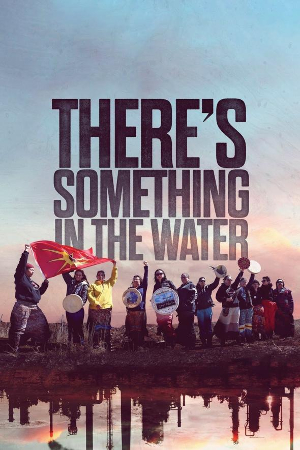
There’s Something in the Water 2019
Distributed by Collective Eye Films, 1315 SE 20th Ave. #3, Portland OR 97214; 971-236-2056
Produced by Ingrid Waldron and Julia Sanderson
Directed by Elliot Page
Streaming, 71 mins
College - General Adult
Environmental Racism; Indigenous Rights; Political Activism; Pollution
Date Entered: 06/01/2021
Reviewed by Angela Walker, Reference & Instruction Librarian, Eastern Connecticut State UniversityThis documentary is inspired by Ingrid Waldron’s book: “There’s Something in the Water: Environmental Racism in Indigenous & Black Communities” (2018). The director and celebrity, Elliot Page takes the audience to their childhood home of Nova Scotia to take a close look at the harmful health impacts of industrial development on marginalized communities. They find Waldron’s statement confirmed that “your postal code determines your health.”
The film documents three cases of environmental racism:
Shelburne, an African Nova Scotian community, has an extremely high rate of cancer after a toxic landfill has for years filled the air with poisonous fumes and contaminated the ground water – a continuing health threat.
Boat Harbour, a tidal estuary and home of the Pictou Landing First Nation, was contaminated by toxic industry wastewater of a pulp and paper mill company that not only instantly killed all the fish, but ruined the water for fishing and recreational purposes since 1967. After years of fighting, the mill was finally shut down in 2020.
Lastly, Stewiacke is the town where local Mi'kmaq First Nations activists, the tribal “Water Protectors”, are currently protesting the Alton Gas project to create caverns for natural gas storage that would ruin their sacred river. This is an ongoing fight.
First-person accounts by local activists leave a strong impression, such as Louise listing the cancer victims in each household as they drive through town, or Michelle describing how her tribal chief grandfather was cheated into signing papers that were devastating for the community. However, the presence of the filmmaker gets in the way of exploring these cases in depth. More time could have been spent on tying in factual research with the activists’ voices. The camera technique is shaky and distracting at times, and so is the musical undelaying. The audience is taken along to accompany the filmmakers to meet these local activists. This approach seems at times unprepared, and it fails when we watch footage of a long-abandoned and benign looking dump. The damage is ongoing, but it is mostly invisible.
While every single case of environmental racism is certainly worth recording, it is important to have a close look at our collective responsibility for these hidden ecological disasters. That part is mostly left out. The cases in this film could be used to further explore the economic impact, political context, or possible solutions to such injustices and grievances. The film leaves the audience with the choice to be outraged – and then what? While Indigenous and African Nova Scotian women keep fighting to protect their communities and their land from the impact that all of us have on the environment, what is our role? What is the role of the government? The film brings to light the environmental injustices that we all need to be aware of, and it gives the victims a voice. Excerpts from this documentary could very well serve as a starting point for a closer study and better understanding of the context of these disasters.
Published and licensed under the Creative Commons Attribution 4.0 license. Anyone can use these reviews, so long as they comply with the terms of the license.